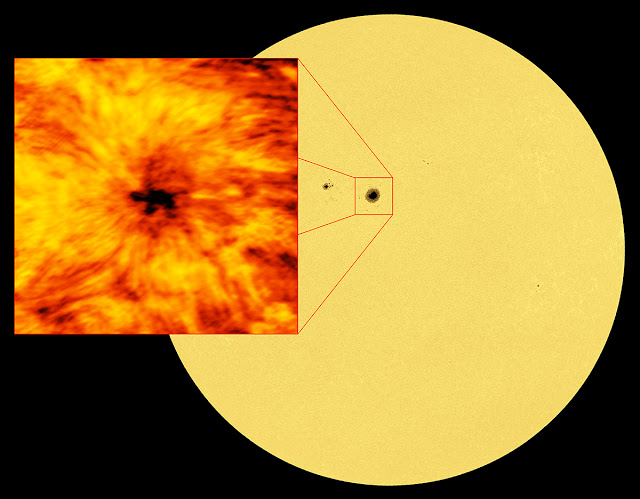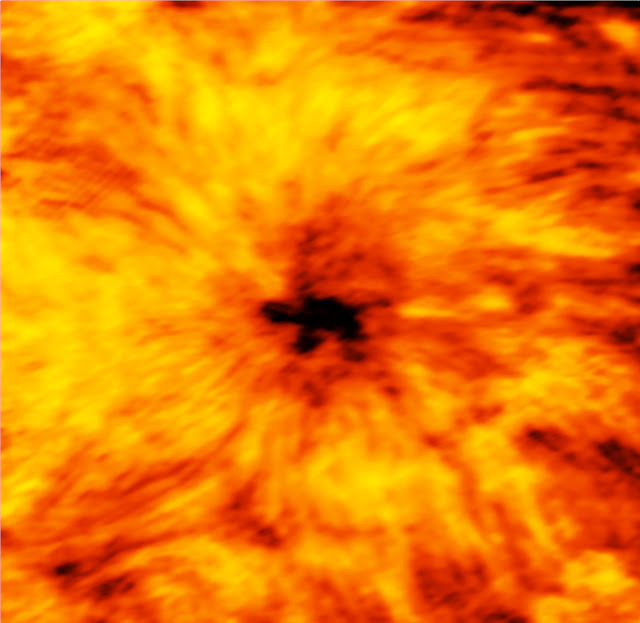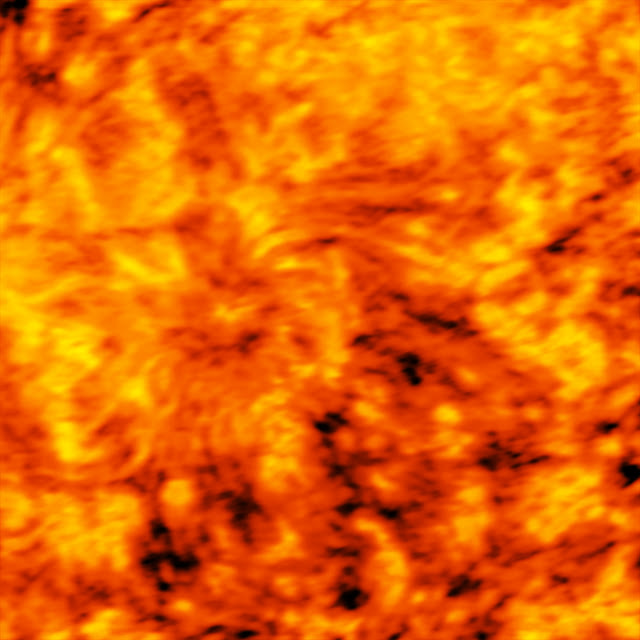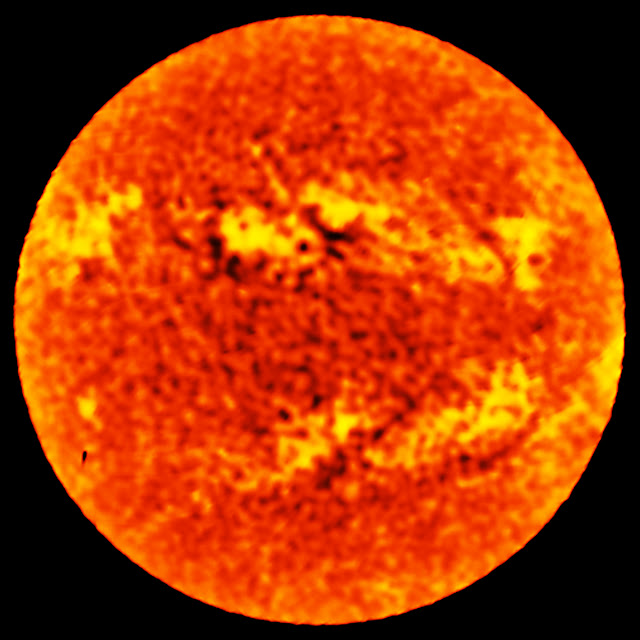

| Online: | |
| Visits: | |
| Stories: |

| Story Views | |
| Now: | |
| Last Hour: | |
| Last 24 Hours: | |
| Total: | |
ALMA Reveals The Sun in New Light
New images from the Atacama Large Millimeter/submillimeter Array (ALMA) reveal stunning details of our Sun, including the dark, contorted center of an evolving sunspot that is nearly twice the diameter of the Earth.
These images are part of the testing and verification campaign to make ALMA’s solar observing capabilities available to the international astronomical community.
This ALMA image of an enormous sunspot was taken on 18 December 2015 with the Band 6 receiver at a wavelength of 1.25 millimeters. Sunspots are transient features that occur in regions where the Sun’s magnetic field is extremely concentrated and powerful. They are lower in temperature than their surrounding regions, which is why they appear relatively dark in visible light.
ALMA tested its solar-observing capabilities by making a series of images of the Sun. From single-dish images of the entire solar disk to a close-up view of an evolving sunspot, these images provide new insights into the dynamics of our nearest star.
ALMA image of an enormous sunspot taken on 18 December 2015 with the Band 3 receiver at a wavelength of 3 millimeters. Sunspots are transient features that occur in regions where the Sun’s magnetic field is extremely concentrated and powerful. They are lower in temperature than their surrounding regions, which is why they appear relatively dark in visible light. The ALMA images are essentially maps of temperature differences in a layer of the Sun’s atmosphere known as the chromosphere, which lies just above the visible surface of the Sun (the photosphere).
This full map of the Sun at a wavelength of 1.25 mm was taken with a single ALMA antenna using a so-called “fast-scanning” technique. The accuracy and speed of observing with a single ALMA antenna makes it possible to produce a low-resolution map of the entire solar disk in just a few minutes. Such images can be used in their own right for scientific purposes, showing the distribution of temperatures in the chromosphere, the region of the solar atmosphere that lies just above the visible surface of the Sun.
“We’re accustomed to seeing how our Sun appears in visible light, but that can only tell us so much about the dynamic surface and energetic atmosphere of our nearest star,” said Tim Bastian, an astronomer with the National Radio Astronomy Observatory in Charlottesville, Va. “To fully understand the Sun, we need to study it across the entire electromagnetic spectrum, including the millimeter and submillimeter portion that ALMA can observe.”
This image of the entire Sun was taken at a wavelength of 617.3 nanometers. Light at this wavelength originates from the visible solar surface, the photosphere. A cooler, darker sunspot is clearly visible in the disk, and — as a visual comparison — a depiction from ALMA at a wavelength of 1.25 millimeters is shown.

Credit: ALMA (ESO/NAOJ/NRAO); B. Saxton (NRAO/AUI/NSF) Full-disc solar image: Filtergram taken in Fe I 617.3 nm spectral line with the Helioseismic and Magnetic Imager (HMI) onboard the Solar Dynamics Observatory (SDO). Credit: NASA
The result of this work is a series of images that demonstrates ALMA’s unique vision and ability to study our Sun on multiple scales.
The National Radio Astronomy Observatory is a facility of the National Science Foundation, operated under cooperative agreement by Associated Universities, Inc.
Source:





